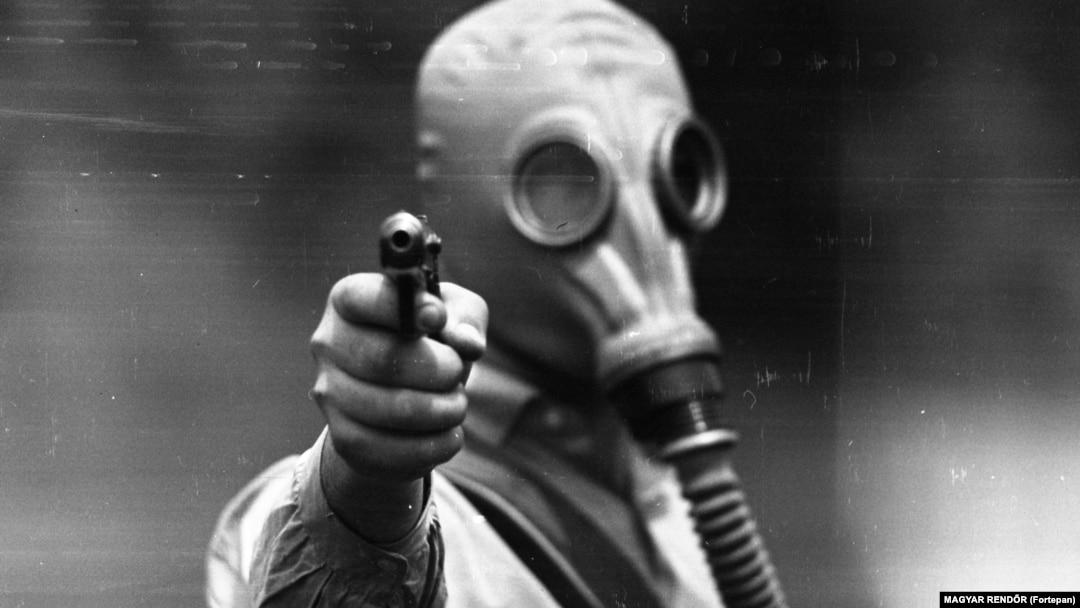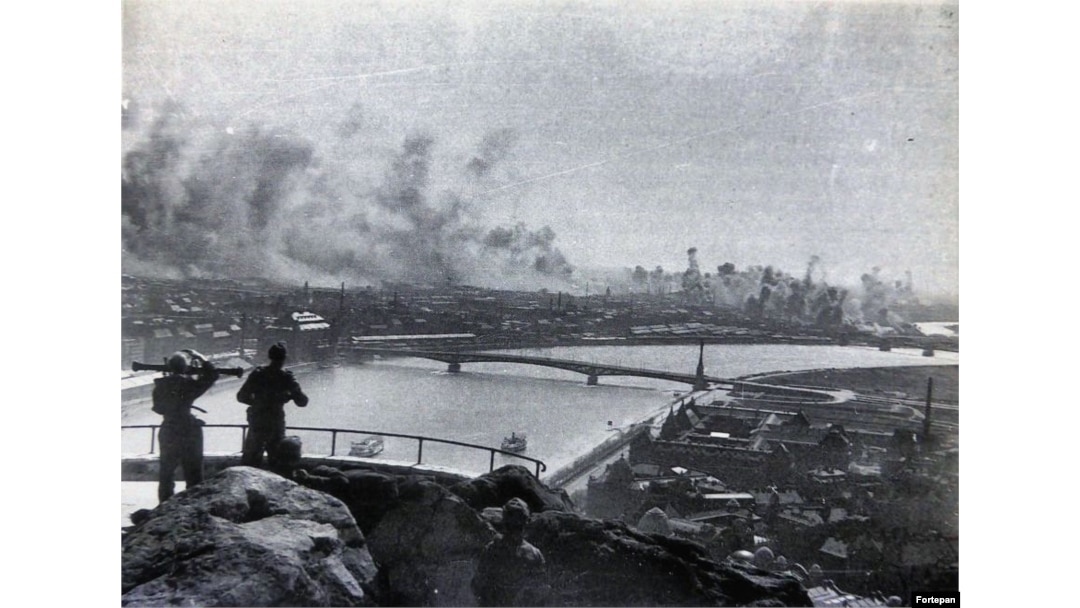
Hungarian soldiers with a range finder watch from Gellert Hill as bombs from an American air raid pummel Nazi-occupied Budapest in 1944.
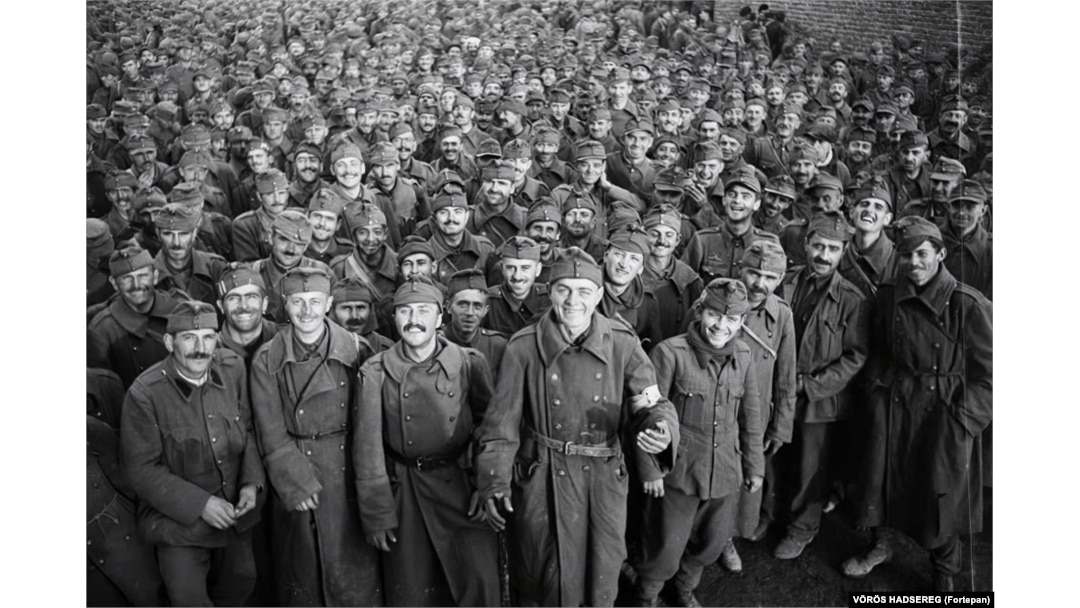
Hungarian prisoners of war after their capture by Soviet troops. Hungary’s leadership sided with Nazi Germany during World War II.
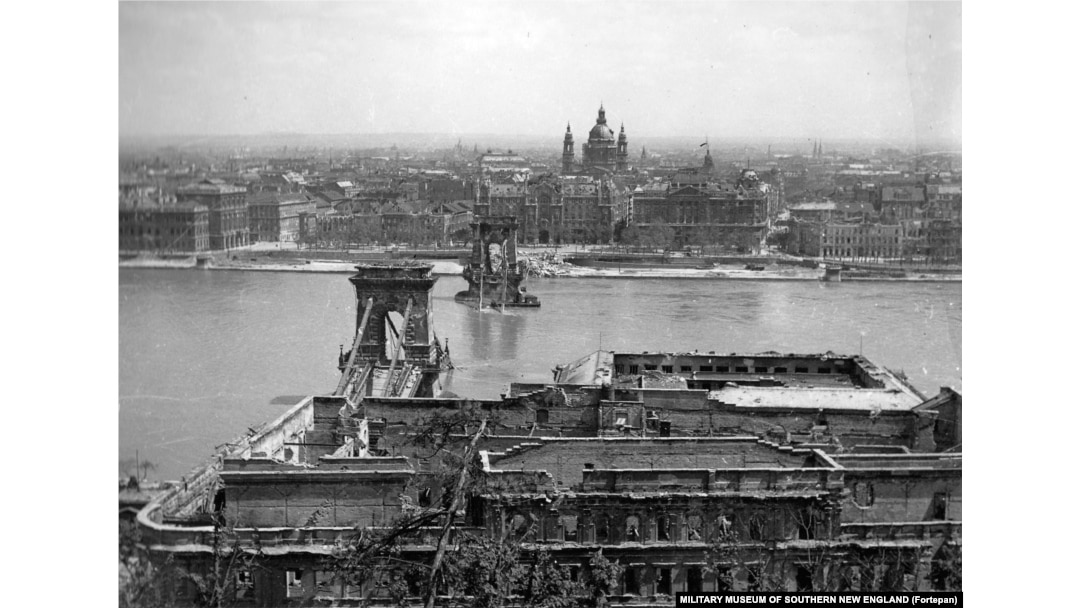
Budapest in 1945, ravaged by war. These pictures are from the Fortepan archive, a collection of more than 100,000 photos from 1900 to 1990 of mostly Hungarian history.
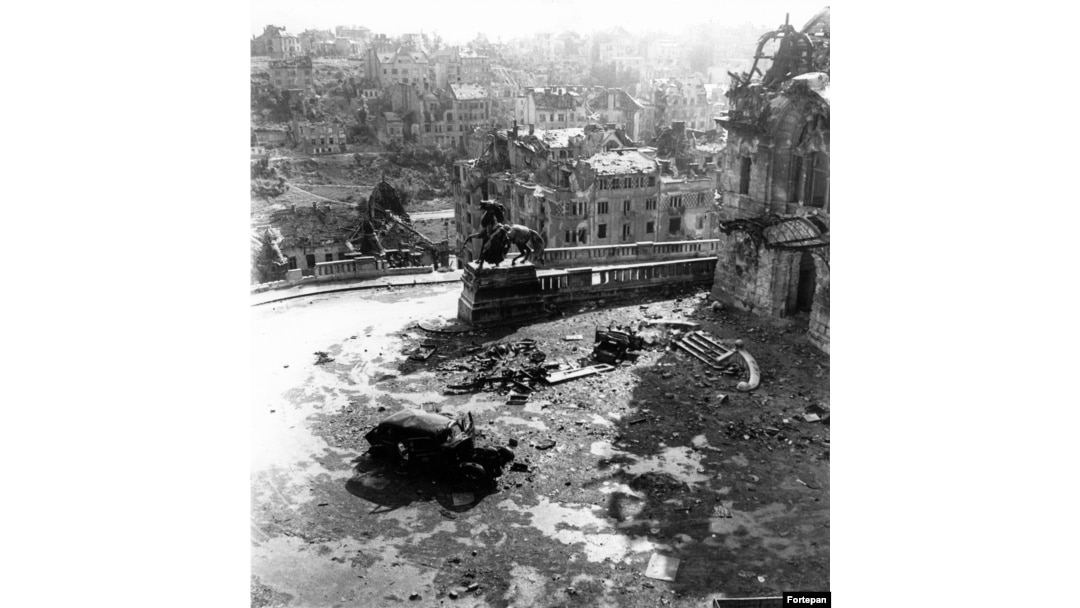
A corner of the Buda Castle following WWII. The Fortepan archive plots the slow reconstruction of Budapest and captures moments from Hungary’s communist period which began after the war and lasted until 1989.
Communist leader Matyas Rakosi (center), paraded alongside portraits of Lenin and Stalin in 1950.
After being tapped to lead a Soviet-backed government in Hungary, Rakosi (center, with various communist leaders in 1953) described himself as “Stalin’s best pupil.”
A monument to Stalin in Budapest’s City Park. Under Rakosi’s rule from 1945 to 1956, hundreds of thousands of Hungarians were imprisoned, exiled, or executed.
The Fortepan archive also holds precious moments of humanity far removed from the politics and conflict of the period. This snap captures two young besties in the shallows of Lake Balaton in 1954.
A man tempts his schnauzer in Budapest in 1952.
Hungary’s state ballet troupe in training in 1955.
Uncle Sam (on throne) drives a parody parade past Budapest’s Stalin monument in 1954. The monument would soon be torn down by crowds during what became known as the Hungarian Revolution.
The battered head of Budapest’s Stalin statue after being dragged through the streets. The 1956 uprising began with a student protest and flared into a full-scale rebellion against Hungary’s communist regime.
A pistol-wielding man emerges from a subway construction site during the chaos of the 1956 uprising.
A bookstore window scrawled with the phrase “Russians go home!” Hungarians fought bitter, deadly battles with Soviet troops inside the country during the uprising.
Uniformed bodies dusted with lime in Budapest in 1956. After the uprising, Soviet troops pulled out of the capital and mobs killed some of the communist regime’s hated secret police.
But Soviet troops returned to Budapest in November 1956 when the U.S.S.R. launched a massive military invasion to reimpose communist rule in Hungary.
A policeman and a cleaner at work in Budapest in 1960.
A chef in Budapest in 1960.
A diver on the Danube between underwater shifts in 1965.
Actresses Hilda Gobbi (middle) and Hedi Temessy (right) with a friend in 1965. After divorcing her husband, Temessy began a romantic relationship with Gobbi.
An unidentified man during a training exercise with pistols and gas masks in 1967.
A bear behind the bar of a famous delicatessen in 1960. The bear was reportedly borrowed from a zoo to promote the anniversary of the deli and tasted everything on the menu.
Piles of sausage being admired by a receptive audience at a festival in western Hungary in 1959.
A German-made Messerschmitt Kabinenroller car in Hungary in 1955.
A barrel of wine is rolled over the Elisabeth Bridge in Budapest upon its structural completion in 1964.
A portrait of pop singer Sarolta Zalatnay in 1969.
Prisoners stitching footballs in a prison in Marianosztra in northern Hungary in 1987. Although state persecution had relaxed since the 1950s, monitoring of citizens seen as a threat to communist rule in Hungary continued through the 1980s.
A man snips away at the border fence between Austria and Hungary in 1989. In April of that year the electric fence along the border was switched off. Parts of the barrier were later removed and the Iron Curtain separating Western Europe from communist Eastern Europe began to break down.
A man wields a Hungarian flag with the communist emblem removed in 1990. A few months earlier, Hungary held its first democratic elections in nearly half a century. Soviet troops left Hungary the following year.


